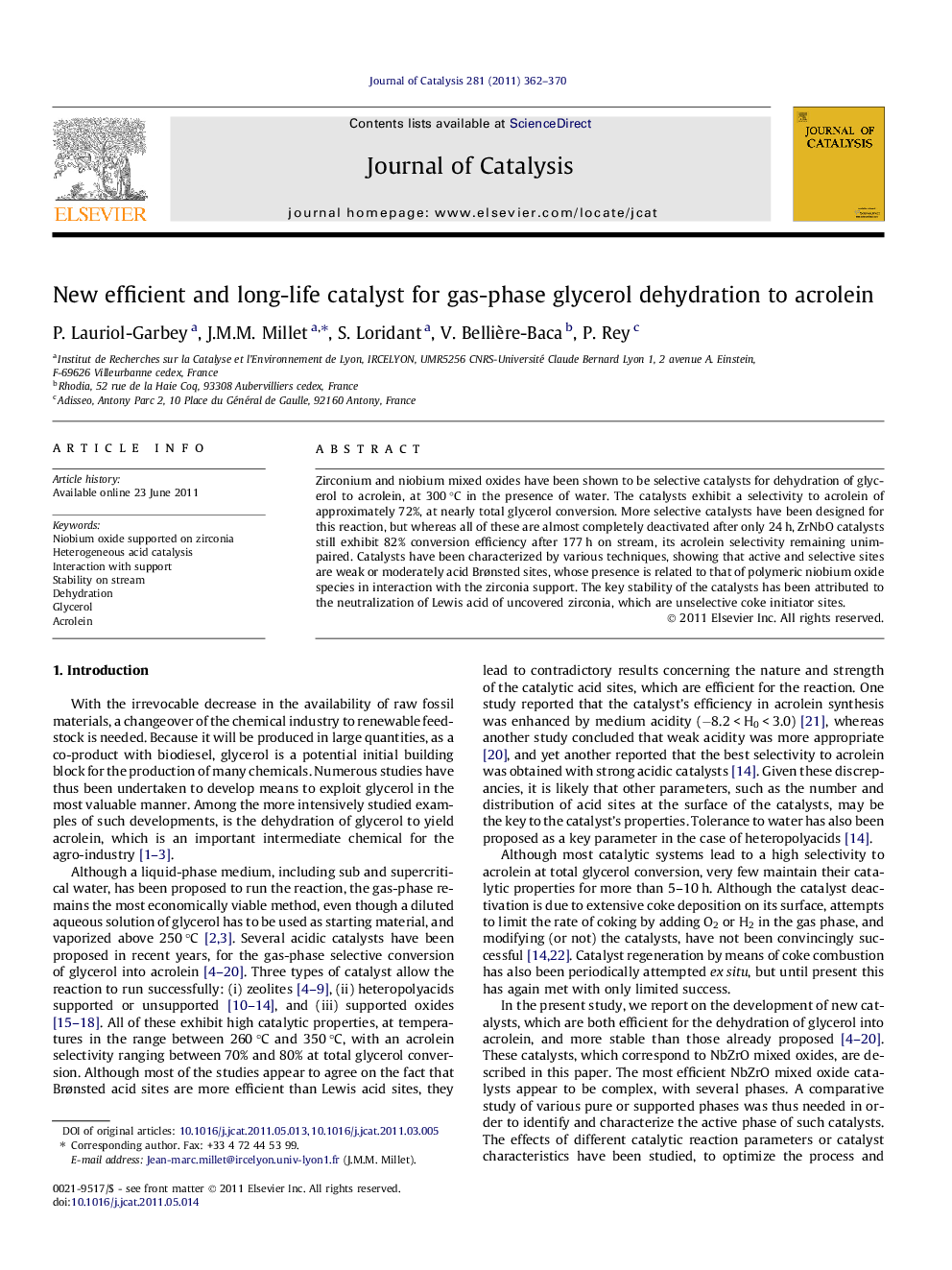| Article ID | Journal | Published Year | Pages | File Type |
|---|---|---|---|---|
| 61688 | Journal of Catalysis | 2011 | 9 Pages |
Zirconium and niobium mixed oxides have been shown to be selective catalysts for dehydration of glycerol to acrolein, at 300 °C in the presence of water. The catalysts exhibit a selectivity to acrolein of approximately 72%, at nearly total glycerol conversion. More selective catalysts have been designed for this reaction, but whereas all of these are almost completely deactivated after only 24 h, ZrNbO catalysts still exhibit 82% conversion efficiency after 177 h on stream, its acrolein selectivity remaining unimpaired. Catalysts have been characterized by various techniques, showing that active and selective sites are weak or moderately acid Brønsted sites, whose presence is related to that of polymeric niobium oxide species in interaction with the zirconia support. The key stability of the catalysts has been attributed to the neutralization of Lewis acid of uncovered zirconia, which are unselective coke initiator sites.
Graphical abstractZirconium and niobium mixed oxides have been shown to be selective catalysts for dehydration of glycerol to acrolein, at 300 °C in gas phase. The catalysts exhibit a selectivity to acrolein of approximately 72%, at nearly total glycerol conversion The New catalysts distinguish themselves by their unique stability on stream that make them promising for industrial application.Figure optionsDownload full-size imageDownload high-quality image (56 K)Download as PowerPoint slideHighlights► ZrNbO catalysts are selective for glycerol dehydration to acrolein (72% at total conversion). ► Catalysts are stable and still exhibit 82% conversion efficiency after 177 h on stream. ► Active sites are weak Brønsted acid related to polymeric niobium oxide supported on zirconia. ► Catalysts stability is related to the neutralization of acid and basic sites of uncovered zirconia.
